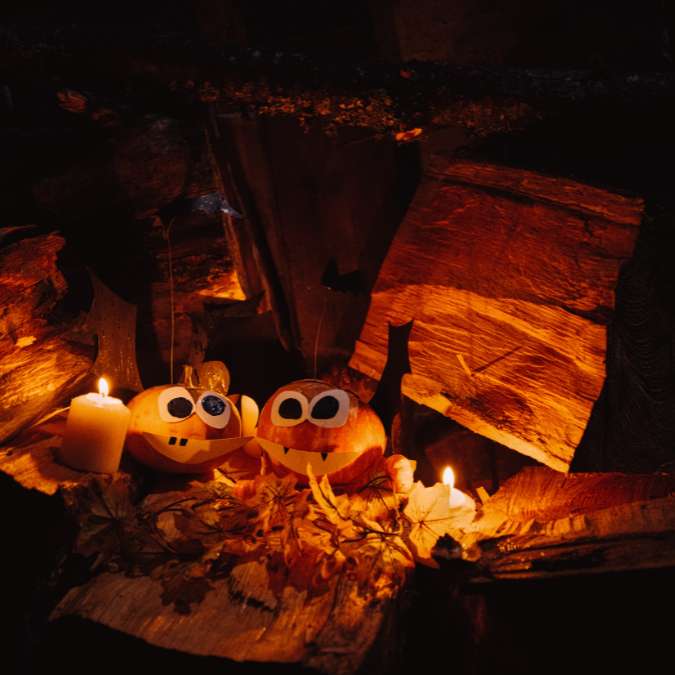
Death has always been one of humanity’s greatest mysteries — something feared, respected, and celebrated across cultures. For thousands of years, societies around the world have found unique ways to honor the deceased, reflect on mortality, and reconnect with their ancestors.
From the ancient Celtic festival of Samhain, which marked the transition between summer and winter, to the vibrant Mexican Día de Muertos, filled with color and music, these festivals of the dead reveal how deeply cultures are shaped by their relationship with death and remembrance.
Let’s embark on a journey through time and continents to explore how different civilizations — past and present — honor the departed while celebrating life itself. 🌺🕯️
🌑 The Origins of Death Festivals: Why Humans Celebrate the Dead
Long before organized religions, humans sought to understand what happens after death. Burial rituals dating back tens of thousands of years — from Neanderthal graves to Egyptian tombs — show a universal belief in an afterlife.
Across civilizations, the living have always marked moments in the year to:
- Remember their ancestors.
- Ask for protection from the spirits.
- Thank the dead for their guidance or presence.
- Reflect on the passage of time and the cycle of life.
These festivals are more than commemorations — they are bridges between worlds. Whether through prayer, feasts, offerings, or silence, people everywhere express a shared truth: death is not the end, but a continuation in another form.
🍂 Samhain: The Celtic Roots of Halloween
The story begins over 2,000 years ago with the Celts, a group of tribes that inhabited parts of Ireland, Scotland, and Wales. Their year was divided into two halves — light and dark — and Samhain (pronounced Sow-in) marked the end of the harvest season and the beginning of winter.
🌫️ A Night When the Veil Thins
Samhain, celebrated around October 31, was believed to be the night when the veil between the worlds of the living and the dead was at its thinnest. Spirits were said to roam freely, visiting their homes or seeking revenge on those who wronged them.
To protect themselves, people lit bonfires, wore masks and costumes to disguise themselves from malevolent entities, and left offerings of food outside their doors to appease wandering souls.
🔥 Rituals and Beliefs
- Fires symbolized the sun’s power during the approaching darkness.
- Druids (Celtic priests) performed sacred ceremonies and divination rituals.
- People gathered to celebrate the end of harvest, share food, and tell stories of ancestors.
Over time, Samhain’s traditions merged with Christian celebrations when the Church established All Saints’ Day (November 1) and All Souls’ Day (November 2) — a move designed to “Christianize” pagan customs.
Today, Samhain survives in modern Halloween, but also in revived Celtic spiritual practices across Ireland, Scotland, and Wales, where people still light fires, wear traditional garments, and honor their ancestors in sacred ceremonies.
🎃 Halloween: The Modern Evolution of Samhain
When Irish immigrants arrived in the United States in the 19th century, they brought their Samhain-based traditions with them. There, the holiday evolved into Halloween — a mix of Celtic, Christian, and American customs.
The word Halloween itself comes from All Hallows’ Eve, the night before All Saints’ Day. Over time, pagan spirituality gave way to fun and community-based activities such as:
- Trick-or-treating 🍬
- Jack-o’-lantern carving 🎃
- Costume parties 🕸️
- Horror storytelling 👻
While the spiritual dimension faded in many Western societies, the idea that death can be faced with humor, playfulness, and creativity remains one of Halloween’s most powerful legacies.
🕯️ All Saints’ Day and All Souls’ Day: Christian Traditions of Remembrance
As Christianity spread through Europe, it absorbed and reinterpreted pagan traditions. Pope Gregory III established All Saints’ Day (Día de Todos los Santos) in the 8th century to honor saints and martyrs, while All Souls’ Day, added later, became a day to pray for the souls of all the departed.
✝️ A Time for Reflection and Prayer
Celebrated on November 1 and 2, these solemn days emphasize prayer, reflection, and remembrance rather than celebration. In countries with strong Catholic traditions — such as Spain, Italy, France, and the Philippines — families visit cemeteries, decorate graves with flowers, and attend mass.
🌸 Symbolism and Meaning
- Flowers, especially chrysanthemums, symbolize eternal life.
- Candles are lit to guide souls on their journey.
- Bells toll in churches to remind the faithful of the presence of the departed.
Despite their somber tone, these Christian festivals continue to offer comfort and connection, reminding people that the bonds of love extend beyond death.
💀 Día de Muertos: Mexico’s Celebration of Life and Death
No festival captures the beauty and duality of death quite like Mexico’s Día de Muertos (Day of the Dead). Recognized by UNESCO as an Intangible Cultural Heritage of Humanity, it is celebrated on November 1 and 2 and blends pre-Hispanic rituals with Catholic influences.
🌺 Ancient Roots
Long before Spanish colonization, indigenous civilizations such as the Aztecs, Maya, and Purepecha held rituals to honor the dead. They believed life was cyclical and that the dead continued to exist in another realm.
These early traditions involved offerings of food, flowers, and personal objects to help souls in their journey through the afterlife.
🕯️ The Modern Celebration
Día de Muertos is a vibrant, colorful, and emotional event, filled with joy rather than sorrow. Families build altars (ofrendas) in their homes, adorned with:
- Photos of loved ones.
- Candles and incense.
- Pan de muerto (a sweet bread symbolizing the cycle of life and death).
- Cempasúchil (marigold) flowers — known as “the flower of the dead.”
- Sugar skulls (calaveras), representing the playful side of mortality.
Cemeteries transform into night-long gatherings, where families eat, sing, and share stories beside graves. It’s a moment to welcome the spirits home, believing they return each year to enjoy the offerings left for them.
🌈 A Celebration of Memory
Día de Muertos is not about mourning but about keeping memory alive. It reminds us that as long as we remember our loved ones, they are never truly gone.
Through films like Coco (2017), this Mexican tradition has reached audiences worldwide, inspiring people from all cultures to rethink their relationship with death.
🪔 Asia’s Festivals for the Dead: Spirituality and Ancestral Connection
Death festivals are not exclusive to the West — Asia is home to some of the oldest and most meaningful celebrations of the dead, deeply rooted in ancestral respect and reincarnation beliefs.
🕯️ Obon (Japan)
Obon, celebrated in mid-August, is one of Japan’s most sacred traditions. During this Buddhist festival, it is believed that the spirits of ancestors return to the world of the living.
Families clean graves, light lanterns (toro nagashi) to guide the spirits, and perform traditional dances known as Bon Odori.
🎐 Obon reflects the Japanese belief that family ties transcend death, emphasizing gratitude and spiritual continuity.
🧧 The Hungry Ghost Festival (China and Southeast Asia)
Celebrated in the seventh lunar month, this Taoist and Buddhist festival honors spirits who wander restlessly. Offerings of food, incense, and paper money are made to appease ghosts and ensure good fortune.
In cities like Hong Kong, Singapore, and Kuala Lumpur, entire communities organize street performances and night feasts for the spirits.
🔥 The belief is that generosity toward the dead brings peace and prosperity to the living — a concept central to Chinese spirituality.
🌸 Chuseok (Korea)
Chuseok, often called “Korean Thanksgiving,” is also a time to honor ancestors through food and ritual. Families return to their hometowns to visit ancestral graves, offer rice cakes (songpyeon), and express gratitude for the year’s harvest.
These festivals, like their Western counterparts, highlight a universal theme: gratitude for the past and continuity with those who came before.
🌍 Other Global Traditions Honoring the Dead
The diversity of death-related celebrations worldwide shows how death is both universal and deeply cultural.
⚰️ Madagascar: Famadihana (The Turning of the Bones)
In Madagascar, the Famadihana ceremony is a joyous ritual held every few years. Families exhume the remains of their ancestors, rewrap them in new cloth, and dance with the bodies to live music.
Rather than being macabre, it’s seen as an act of love and respect, reinforcing family unity and continuity between generations.
🌺 The Philippines: Undas
The Filipino Undas (All Saints’ and All Souls’ Days) is a national holiday marked by massive cemetery gatherings. Families clean tombs, decorate them with candles and flowers, and spend the night sharing food and laughter — much like Día de Muertos.
🔥 Indonesia: The Toraja Death Rituals
In Indonesia’s Toraja region, funerals are elaborate, multi-day events celebrating the life of the deceased. The dead are often kept at home for months or years until the family can afford a proper ceremony, believed to help the spirit reach the afterlife.
🕊️ The Universal Message: Death as a Celebration of Life
Across cultures — from ancient Celts to modern Mexicans, from Buddhists to Catholics — one truth endures: death is not the end, but part of a larger cycle.
These festivals teach us to:
- Embrace death rather than fear it.
- Honor the dead as a way to strengthen the living.
- Celebrate memory as a bridge between generations.
- Find beauty in impermanence, understanding that life’s fragility gives it meaning.
Whether through solemn prayers or joyful songs, lighting candles or sharing food, these global traditions reflect our shared humanity — our need to connect, remember, and find peace with the inevitable.
🌺 Conclusion: From Samhain to Día de Muertos — The Eternal Dialogue Between Life and Death
From the misty Celtic hills of ancient Europe to the colorful cemeteries of Mexico, the festivals of the dead reveal how each culture transforms grief into celebration.
The Celts sought to protect themselves from spirits. Christians prayed for their salvation. Asians welcomed their ancestors home. Mexicans danced and feasted with the dead as if they never left.
Different expressions, same purpose: to honor the cycle of existence, to remember where we come from, and to celebrate the eternal connection between the living and the departed.
In the end, these celebrations remind us that death, far from being a final goodbye, is a conversation that continues — every year, every generation, every memory. 💀🕯️🌼
Sources:
- UNESCO: Intangible Cultural Heritage – Día de Muertos (2023)
- BBC Travel: The Revival of Samhain in Modern Ireland (2024)
- National Geographic: Festivals of the Dead Around the World (2023)
- Encyclopedia Britannica: All Saints’ and All Souls’ Days
- Japan Times: Obon Traditions and Their Meaning (2024)
- Smithsonian Magazine: Famadihana and Malagasy Ancestor Worship (2023)

